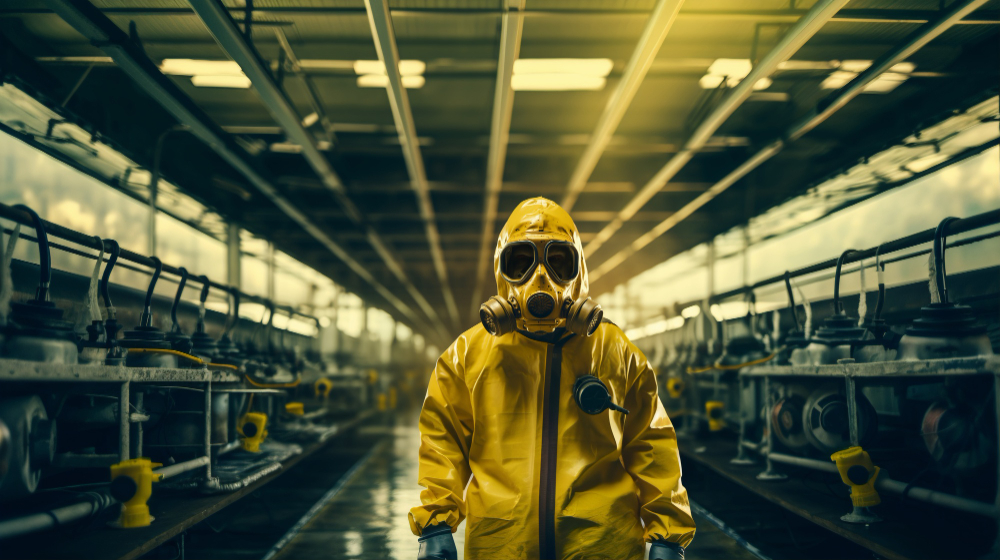Industrial hygiene is a field dedicated to identifying, evaluating, and controlling workplace hazards to ensure the health and safety of workers. Hazards can arise from various sources in industrial settings, ranging from chemical exposures to physical dangers. In this article, we’ll explore the types of hazards defined by industrial hygiene, highlighting the key categories and providing insights into their identification and mitigation strategies.
Assessing Toxic Substances
Chemical hazards encompass a broad range of substances that can pose health risks to workers through inhalation, ingestion, or skin contact. These hazards include gases, vapors, liquids, dusts, and fumes produced during industrial processes. Common examples of chemical hazards include solvents, acids, bases, heavy metals, and pesticides. Industrial hygienists assess chemical exposures through air monitoring, exposure modeling, and workplace sampling, implementing control measures such as ventilation, substitution, isolation, and personal protective equipment (PPE) to minimize risks.
Addressing Pathogens and Contaminants
Biological hazards involve exposure to living organisms or their byproducts, including bacteria, viruses, fungi, and allergens. Workers in healthcare, agriculture, food processing, and waste management may encounter biological hazards such as bloodborne pathogens, mold spores, airborne bacteria, and animal dander. Industrial hygienists assess biological risks through microbial sampling, environmental monitoring, and health surveillance, implementing measures such as sanitation, disinfection, vaccination, and PPE to prevent infections and safeguard workers’ health.
Managing Mechanical and Energy Hazards
Physical hazards encompass a wide range of non-chemical and non-biological dangers present in the workplace, including mechanical, ergonomic, noise, vibration, temperature, and radiation hazards. These hazards can result in injuries, musculoskeletal disorders, hearing loss, thermal stress, and radiation exposure. Industrial hygienists evaluate physical hazards through workplace assessments, ergonomic evaluations, noise surveys, and radiation monitoring, implementing controls such as engineering controls, administrative controls, ergonomic redesigns, and personal protective equipment (PPE) to reduce risks and promote worker safety.
Preventing Musculoskeletal Disorders
Ergonomic hazards relate to the design and layout of workstations, tools, and equipment, which can lead to musculoskeletal disorders (MSDs) such as strains, sprains, and repetitive motion injuries. Poor ergonomics can result from awkward postures, repetitive tasks, excessive force, and inadequate workstation design. Industrial hygienists assess ergonomic risks through workplace evaluations, task analyses, and ergonomic assessments, implementing interventions such as ergonomic training, workstation modifications, job rotation, and ergonomic equipment to improve work conditions and prevent injuries.
Addressing Mental Health and Stress
Psychosocial hazards refer to workplace factors that affect mental health and well-being, including job stress, harassment, bullying, violence, and organizational culture. These hazards can contribute to psychological distress, anxiety, depression, and burnout among workers. Industrial hygienists assess psychosocial risks through surveys, interviews, and psychological evaluations, implementing interventions such as stress management programs, conflict resolution strategies, employee assistance programs, and organizational policies to promote a positive work environment and support employee mental health.
Prioritizing Hazard Identification and Control
In conclusion, industrial hygiene plays a crucial role in identifying, evaluating, and controlling a wide range of hazards in the workplace. Chemical, biological, physical, ergonomic, and psychosocial hazards pose significant risks to worker health and safety, requiring proactive measures to mitigate risks and prevent occupational illnesses and injuries. By understanding the types of hazards defined by industrial hygiene and implementing effective control measures, organizations can create safer and healthier work environments for their employees, fostering productivity, morale, and overall well-being.


